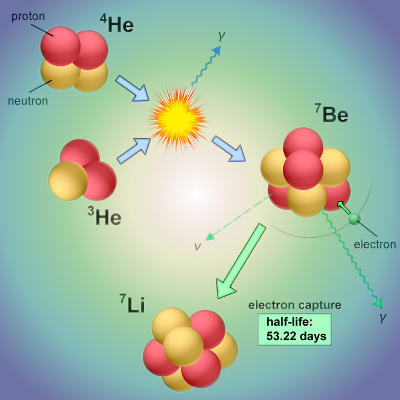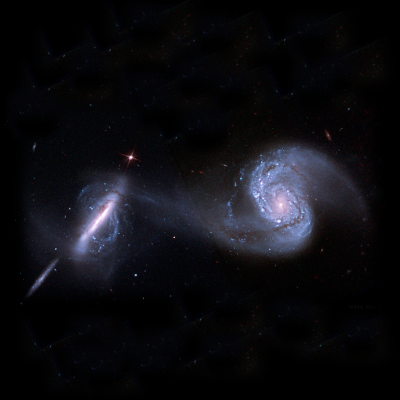Key scientific objectives
-
Transient Astrophysical Phenomena
MOSAIC will enable spectroscopic follow-up and population studies of a wide range of explosive and transient events, including:
Examples of key questions
| |||||
-
Time-Domain Astrophysics
MOSAIC’s high sensitivity and multiplexing capabilities will enable large-scale spectroscopic monitoring campaigns to study astrophysical variability across a wide range of timescales, from minutes to years:
Examples of key questions
| |||||
-
Multi-Messenger Astrophysics
With the advent of gravitational wave and high-energy neutrino astronomy, MOSAIC will play a pivotal role in identifying and studying electromagnetic counterparts of multi-messenger events:
Examples of key questions
| |||
 The oldest and lowest metallicity stars that exist today carry the imprint of the first massive stars that ended their lives as supernovae. We can constrain star formation in very metal-poor environments by analysing the metallicity distribution functions (MDFs) of stellar populations in the local Universe. Specifically, we are interested in probing the MDFs in a variety of environments, from the outer stellar halo in the Galaxy to the bulge, as well as in other galaxies in the Local Group (mostly dwarf spheroidals and ultra-diffuse dwarfs). | ||
The characterization of primordial stars in the Galaxy has great scientific potential. These stars are the long-lived descendants from the earliest stellar generations and will have formed from a (near-)pristine ISM, which would have only been weakly enriched in metals from the first supernovae. Their atmospheres therefore give us a fossil record of the ISM from which they were formed, corresponding to redshifts of z ≥ 10. Having a direct tracer of chemical abundances at such an early time can provide fundamental constraints on the properties of the first generations of stars. The limit of the current observations do not allow to discriminate between different theoretical models on e.g. the need and the level of a “critical metallicity” for the formation of low mass stars. MOSAIC will allow to greatly increase the constraints on the low-metallicity tail of the MDF which would result in stronger constraints on the formation models.
The stellar populations of the Galactic bulge are a template for studies of ellipticals and bulges of spirals. The formation history of the bulge can give hints on proto-galaxy counterparts observed at high-redshift, providing strong motivation for the detailed study of this component of our Galaxy. The formation of our bulge is still a controversial issue, and it is probably a combination of a pseudo-bulge population, and an old, spheroidal, true bulge. Studies of the chemical compositions and kinematics of its stellar populations will be the key to disentangle its formation mechanism(s). Current high-spectral resolution observations in the optical (e.g. with VLT/FLAMES) are limited to giant stars, but observations of dwarfs will be important to disentangle the complex mix of stellar populations in the bulge. Currently, few dwarfs have been studied via microlensing techniques, but with MOSAIC a significantly larger population of dwarf will be accessible in the Galactic bulge.
As for extragalactic studies, the current limiting factor is that only giant stars are bright enough to have high quality, high-resolution spectroscopy with an 8-m class telescope. Unfortunately, the statistics available from the analysis of extragalactic red giant branch (RGB) stars is not sufficient to determine the metal-poor tail of the MDF robustly in their host galaxies. There are simply not enough giant-branch stars in most of the LG dwarf galaxies to sample these rare populations and to observe these faint stars in extragalactic systems we need the sensitivity of the E-ELT. One then needs large samples of stars at the main-sequence turn-off (MSTO), in multiple nearby galaxies.
|
A large (hundreds to thousands of galaxies) and representative survey of spatially-resolved galaxies selected homogeneously over the redshift range z=2-4 is an important scientific goal for the ELT. This will probe the mass assembly of galaxies by disentangling the different physical processes at work as a function of time and mass (Puech et al. 2010; 2018). When combined with deep imaging in the rest-frame near-IR from, e.g., the JWST, the evolution of their dynamical state as a function of time and mass can be investigated. Amongst the whole mass spectrum, low mass galaxies represent a unique niche for the large integrated area of the ELT as we detail below. | ||
Dwarf galaxies are expected to play a key role in galaxy formation and evolution. In hierarchical models they are thought to be the first structures to form in the Universe and are believed to have an important contribution to the reionisation process. Investigating the detailed properties of dwarf galaxies around the peak of cosmic star formation history (z ~ 2) is therefore an important test of structure formation in ΛCDM. Spatially resolved studies of the star formation activity and the metal enrichment provide powerful diagnostic tools: metallicity gradients are thought to be highly sensitive to the gas surface density, its kinematic structure (coherent rotation vs unordered motions), and the prevalence of inflows and outflows. Distant sub-M* galaxies have faint apparent magnitudes and we still have limited knowledge of their morphological and chemodynamical properties (e.g., Kassin et al. 2012; van der Wel et al. 2014; Kartaltepe et al. 2015; Whitaker et al. 2015; Simons et al. 2015). The samples for which spatially-resolved kinematics can be obtained remain small and the integration times very large (e.g., Contini et al. 2016).
Simulations show that mapping the properties of the ionised haloes of starbursting dwarfs similar to Haro11 at z ~ 2 should be feasible in ~10hr with multi-IFU observations. Typical logM* = 9 galaxies at z = 2 have internal velocity dispersions ???? < 50 km/s (Mason et al. 2016), which MOSAIC will be able to resolve but JWST/NIRSpec will struggle with. In addition to enabling the measurement of (spatially-resolved) internal motions, resolving emission lines down to ???? ~ 10 km/s will be critical to unveiling the presence of the narrow kinematical subcomponents that are characteristic of rapidly assembling dwarfs (Amorin et al. 2012)--and which indicate that star formation typically proceeds in an ensemble of several compact and turbulent clumps.


 Observation of the supernova remnant Tycho (SN 1572). Credit : X-ray : NASA/CXC/SAO, Infrared: NASA/JPL-Caltech ; Optical: MPIA, Calar Alto, O.Krause et al.
Observation of the supernova remnant Tycho (SN 1572). Credit : X-ray : NASA/CXC/SAO, Infrared: NASA/JPL-Caltech ; Optical: MPIA, Calar Alto, O.Krause et al. Illustration of the most common type of gamma-ray burst: The core of a massive star (left) has collapsed, forming a black hole that sends a jet into space at nearly the speed of light. Radiation, including gamma rays, X-rays, visible light and radio waves, arises from hot ionised gas near the newborn black hole, collisions among shells of fast-moving gas within the jet, and from the leading edge of the jet as it sweeps up and interacts with its surroundings. Credit: NASA's Goddard Space Flight Center.
Illustration of the most common type of gamma-ray burst: The core of a massive star (left) has collapsed, forming a black hole that sends a jet into space at nearly the speed of light. Radiation, including gamma rays, X-rays, visible light and radio waves, arises from hot ionised gas near the newborn black hole, collisions among shells of fast-moving gas within the jet, and from the leading edge of the jet as it sweeps up and interacts with its surroundings. Credit: NASA's Goddard Space Flight Center.
 Artist’s impression of an X-ray binary. Credits: ESA, NASA, and Felix Mirabel.
Artist’s impression of an X-ray binary. Credits: ESA, NASA, and Felix Mirabel.

